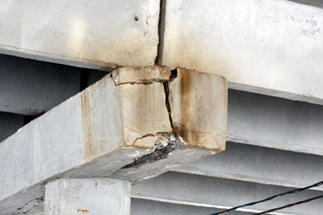Durable concrete materials for Durable Construction
What is Concrete Durability?
Durability of concrete is an important and crucial topic related to concrete structures.
So, what does durability mean?
According to Cambridge dictionary, durability is defined as “the quality of being able to last a long time without becoming damaged.”
In the construction industry, the durability of concrete refers to its ability to withstand the environmental actions without being compromised. Examples of environmental actions are weathering action, chemical attack, and abrasion.
So, durable concrete will be able to resist the environmental conditions it is serving in without being damaged during the service life of the structure. The level of durability required differs from concrete to concrete depending on the severity of the conditions. For example, concrete in sea water will have different requirements than indoor concrete.
Different categories of durability exist for concrete serving in:
- acidic environments.
- freezing environments
- sulfate-rich environments and so on

How to Make Concrete Durable?
There are multiple things to do, aiming for achieving durable concrete. The following list shows few things that can help to achieve durability:
- Proper structural design considering all possible loadings since inaccurate design will cause cracking and serviceability issue in addition to safety problems.
- On of the most basic methods to achieve the concrete durability is select durable construction materials for structural concrete.
- Choosing proper specs for the materials used in construction.
- Targeting impermeable concrete that has the ability to resist the ingress of detrimental substances into concrete.
- Appropriate construction practices to avoid construction problems.
- Surface coating of concrete to extend its service life.
- Setting maintenance times for concrete (planning maintenance) to extend its service life.
In this article, we look into the selection of durable materials to achieve durable concrete.
Concrete Durability Starts with Durable Ingredients
Durable concrete can not be achieved without durable materials. Thus, care has to be given to this very initial step before proceeding with the mixture design and casting.
Choosing durable construction materials
Cementitious Materials
One of the main components of the concrete mixture is cementitious materials. There are two categories of cementitious materials: supplementary cementitious materials (SCMs) and hydraulic cement. By chemically interacting with water, hydraulic cements set and harden. Heat is released during the hydration step, which binds the aggregate particles together by hardening the water-cement paste. The most prevalent hydraulic cement is Portland cement. By lowering the heat of hydration, SCMs are employed in concrete mixes in addition to portland cement to increase the workability of fresh concrete and decrease thermal cracking in massive projects.
Cementitious materials either cement of any of the SCMs should be selected according to the code specs such that it does not include any appropriate materials that negatively affect the durability of the mortar or concrete mix.
Water
Water, if not clean, can destroy concrete. For example, using sea water in concrete will significantly reduce its durability.
Usually, potable water is suitable for mixing in concrete.
Potable water, also referred to as drinking water , is obtained from surface and underground sources and treated to satisfy state and federal criteria for consumption. Natural water is purified to remove viruses, germs, hazardous compounds, feces, and microbes.
Fine and Coarse Aggregates
Aggregates, either fine or coarse, should follow the specs of the governing code of practice.
The coarse aggregate needs to be properly graded and alkali reactive-free. The sand’s fineness modulus should be between 2.6 and 2.85, and it should be devoid of silt, salt, moisture, and gravel.
Chlorides and other contaminants may be present in significant amounts in the seabed sand. Use of sand that has been dug up from the sea bed should thus be avoided. If at all, it should only be used after being washed and dried.
Sand that has been washed and is compliant with the code should be tested for salt content, silt, moisture, etc. Prior to usage, the water used to wash the sand must also pass a test. Grading following sand washing should be taken into consideration.
Admixtures
Concrete admixtures are substances that are added to fresh or hardened concrete during mixing to improve certain qualities, such as workability, durability, or early and final strength.
Admixture should be free from detrimental substances such as chlorides to avoid problem to concrete or steel reinforcement.
Read Also:
